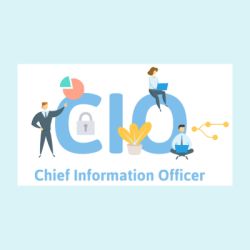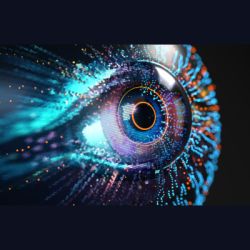As
some of us get older, we start to contemplate the care and support that we will
require in our advanced years and how these might be provided to us at an
acceptable quality, a manageable cost and with as little disruption to us and
the people around us as possible.
Smart
homes (SH) are enabled by software and hardware solutions (and a combination of
both) to provide support and care services to the aging, the elderly and those
who require (long-term) healthcare, on an increasingly autonomous basis. These
solutions include AI-based carers, cooks, transport systems, heart and motion
monitors, smart kettles, phones, and fridges. SH enable a degree of independence
and aging in familiar surroundings whilst giving relatives some degreeof assurance about their relatives’
care. There are, however, concerns, challenges and questions which need to be
addressed by SH solutions developers, vendors, end users, governments,
regulators and healthcare suppliers, these challenges and questions which may
affect the adoption and use of SH and SH products.
- Security and Cyber threats to SH devices, homes and home occupants. These include Distributed Denial of Service (DDoS) attacks; ransomware; unpatched and vulnerable systems; firmware malware; rootkits and backdoors; theft/loss of data, information and hardware; blackmail and other yet unknown threats.
- Confidentiality of SH communications and data, whether at rest or in motion.
- Interoperability This concerns if, and how, existing, perhaps even legacy, technologies might work with new ones, whilst recognising that legacy systems may provide a path for malware to get onto SH networks.
- Prejudiced Programming Extensive, open discussions are required around equal treatment, robo-ethics, AI ethics, robo-morals and related matters.
- Continuous Availability Especially for countries where power supply is intermittent or minimal, it is crucial to identify what options exist for manual backups, alternatives and even overrides of autonomous systems.
- Privacyof SH occupants in the face of technologies which monitor and collect data about them: what laws protect their data, security and privacy especially in the face of GDPR and deployments in non-GDPR-compliance countries?
- Functionality Considering robot “care” systems: are resets possible? How many resets per device will be allowed and by whom: by authenticated users only?
- Affordability Cost of hiring, owning, maintaining, replacing, training and insuring SH solutions.
- Ease of use Will (extensive) training be required before end users are able to make use of SH solutions to avoid poor configuration leading to malfunctions.
- Universality, peculiarity and breadth of use cases Smart technologies should understand the characteristics and cultural nuances of the different people groups of the world (languages, skin tones, etc.) whilst also addressing universal requirements.
- A Framework is required to guide the secure acquisition, access, configuration, storage and disposal of hardware and data.
- Regulations which govern the design, training, algorithms, behaviours, manufacture, sale, security, use and retirement of SH autonomous systems are required.
- Seamless Integration This concerns methods of maintaining normality even as a home becomes smarter so its occupants are not overwhelmed by any changes.
- Flexibility of technologies It is important for all SH systems to have a degree of flexibility and to be able to learn and adapt as people change their habits, without misinterpreting a change in habit as a malicious event.
- Simplified, suitable and secure multi-factor authentication systems A fingerprint biometric solution deployed to control access to a SH whose occupant has hand tremors may not be a suitable solution.
- Accuracy and reliable operation The system must be built to, as much as possible, accurately recognise trusted third parties including family, friends, carers and maintenance staff and correctly identify user error.
- Degrees of rights and freedoms of humanswith respect to non-human elements. Consider suicides using robots, excessive care by robots and similar scenarios.
Ownership of personal devices and data (locally stored and in the cloud), and hired and shared devices (e.g. robot carers) and ensuring shared devices can learn and accurately identify their different user’s habits.
With
Smart Homes, end users should not be
afraid but they must be aware. To engender trust and comfort for end users,
the following recommendations must be considered by the relevant stakeholders, as
it applies to them:
(Inter)connect
Smart Things only where absolutely necessary; segment and isolate networks to
contain failure and avoid failure across single or multiple networks; change default
authentication settings on devices and change these over time; provide
cyber-awareness training and support for home occupants; use anti-malware tool(s),
firewalls etc.; block unused ports/protocols; monitor
legitimate “backdoors” used by vendors or service providers to monitor and
communicate with SH nodes; consider taking out insurance
against damage and loss; set up regulations and standard practices that
smart nonhuman carers will be designed
to adhere to and a framework that they operate within; secure
all data that is fed into (machine) learning systems to prevent corruption;
verify sources of data; source diverse opinions during initial design phases by
using focus groups from diverse
backgrounds; define and implement baselines for managing the decisions of robots; anticipate and
prepare for cyber-physical threats using threat
hunting for SH; introduce dedicated monitoring by
a trusted “relative or friend” of each nonhuman Thing (device) in the SH.
Zoom On
What is your top management tip?
LISTEN to the Junior member of staff. Let the Junior speak.
What would you single out as a career highlight?
Achieving my PhD degree and having the opportunity, for the first time, to be present at a premiere of one of my compositions on July 2nd 2017 at the London SouthBank Centre.
What are your personal interests outside of work?
Singing and Composing music.
Your favourite quote?
Anyone who thinks robots will take over from humans has not met humans. - Edewede Oriwoh























